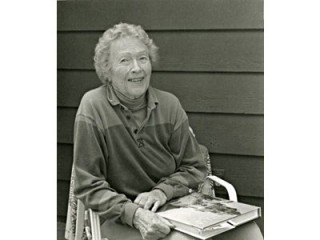
Julia Morgan biography
Date of birth : 1872-01-20
Date of death : 1957-02-02
Birthplace : San Francisco, California, U.S.
Nationality : American
Category : Arhitecture and Engineering
Last modified : 2011-08-24
Credited as : Architect, Hearst Castle in San Simeon,
Julia Morgan, California's first licensed female architect, designed both institutional buildings and private homes in the San Francisco area. She preferred to use indigenous materials and carefully designed for often topographically difficult sites.
Julia Morgan was born on January 20, 1872, in San Francisco, California, and died there in 1957. Her career as an architect was shaped by two principal facts: her residence in California, with its distinctive architectural traditions and practical possibilities, and her gender—at the beginning of the 20th century she was a woman attempting to break into a field judged by most of her contemporaries to be the exclusive province of men. In fact, she became California's first licensed female architect.
After graduating with a degree in engineering from the University of California, Berkeley, in 1894, Morgan planned to continue her education at the world's most prestigious architectural school, the Ecole des Beaux-Arts in Paris. In applying there, she was following a pattern established by such well-respected American architects as Henry Hobson Richardson, Louis Sullivan, and her own California mentor, Bernard Maybeck; and while her initial attempts to enroll were rebuffed because she was female, ultimately she was permitted to attend classes there.
Upon her return from Europe in 1902, Morgan began her architectural career in the San Francisco area working for the designer John Galen Howard on buildings for her alma mater; she also collaborated with Maybeck, with whom she was continuing to develop a strong professional relationship. Maybeck's personal style, a product of Beaux-Arts discipline and individual fancy, was one which appealed to her enormously and which had a lasting effect on her own style.
Among Julia Morgan's most important early projects as an independent architect were designs (begun in 1904) for several buildings on the campus of Mills College, a four-year institution for women in Oakland, California. Following the San Francisco earthquake of 1906, Morgan was able to obtain a large number of commissions in the Bay Area, many of them for private homes. Like Maybeck, Morgan took an eclectic approach to design and refused to limit herself to the popular, conservative, turn-of-the-century revival styles sweeping the country and dominating the domestic market. The house that best exemplifies this attitude is also her most famous work "La Casa Grande," William Randolph Hearst's home at San Simeon, California (begun in 1919), one of several commissions executed for the Hearst family. It is actually a complex of domestic buildings, eclectic in style, made comprehensible through Beaux-Arts organization. The commission was a difficult one as Hearst constantly changed his mind about details relating to the design; yet Morgan's patience and resolve carried her through the project.
Morgan's career was financially successful in part because she seemed to be able to deliver the kind of design that would appeal to the Hearsts and others of their economic class. Yet Morgan's works were by no means limited to lavish domestic structures. She designed several centers for the Young Women's Christian Association, as well as private clubs, churches, and commercial establishments.
Further, she created many moderate-sized homes for middle-class families. She specialized in indigenous materials, particularly in her designs for these smaller, less-expensive houses; in this way, her works can be seen to be in keeping with other, more famous California progressive architects, such as her contemporaries Charles and Henry Greene and her mentor Maybeck. The Williams and Mitchell House (1915-1918) is one of several redwood-shingled cottages that are perched astride the Berkeley Hills in the vicinity of San Francisco. Here, several of her solutions to the problem of the small house placed on a difficult site are in evidence: by eliminating unnecessary rooms and opening up areas of the walls with very large windows, she made the limited space feel open and airy. She also changed scale in an attempt to accommodate the building to the uneven topography. In short, whether designing for a millionaire or a schoolteacher, Morgan gave her client a carefully considered solution.
One of the hallmarks of Julia Morgan's career is that she realized so many of her projects: more than seven hundred buildings were constructed over a career that spanned nearly fifty years. One of the few unbuilt designs was a museum in the medieval style for Golden Gate Park in San Francisco, and the fact that it remained unbuilt saddened the architect in her last years. Morgan ended her career on a dramatic and mysterious note when she ordered virtually all her professional records destroyed a few years before her death in 1957.
An interesting treatment of the life and work of Julia Morgan is Sara Boutelle's Julia Morgan, Architect (1988). A modest-sized publication with an excellent text is Julia Morgan— Architect by Richard Longstreth (1977). There have been several articles published on Morgan since the centennial of her birth. These include two by Boutelle: "The Woman Who Built San Simeon," in the California Monthly (1976), and "Women's Networks: Julia Morgan and her Clients," in Heresies of 1981. Nancy Loe's San Simeon Revisited (1987) is a collection of the correspondence between the architect and William Randolph Hearst. The University of California at Berkeley has assembled a valuable trove of information on Morgan as part of their regional oral history series. The two volumes are entitled "The Julia Morgan Architectural History Project."
















